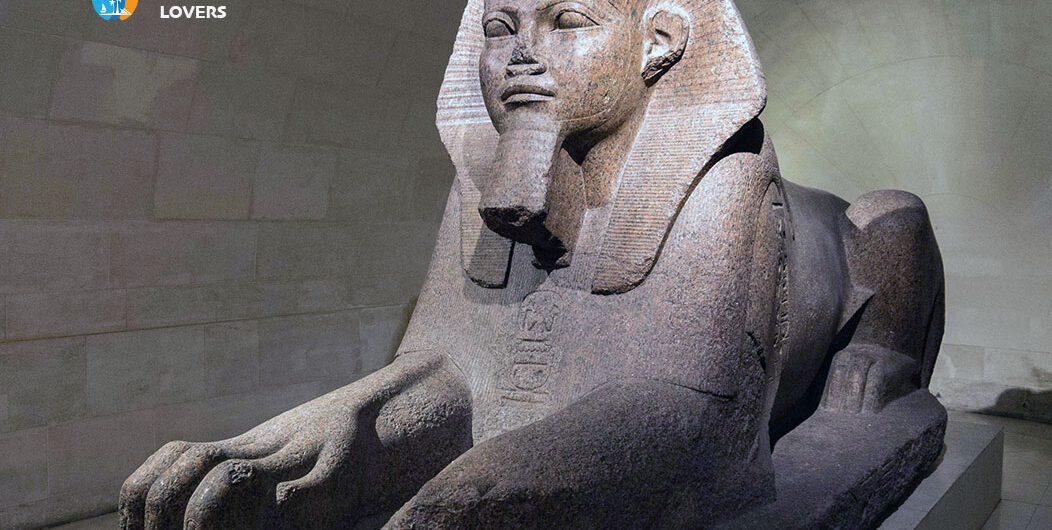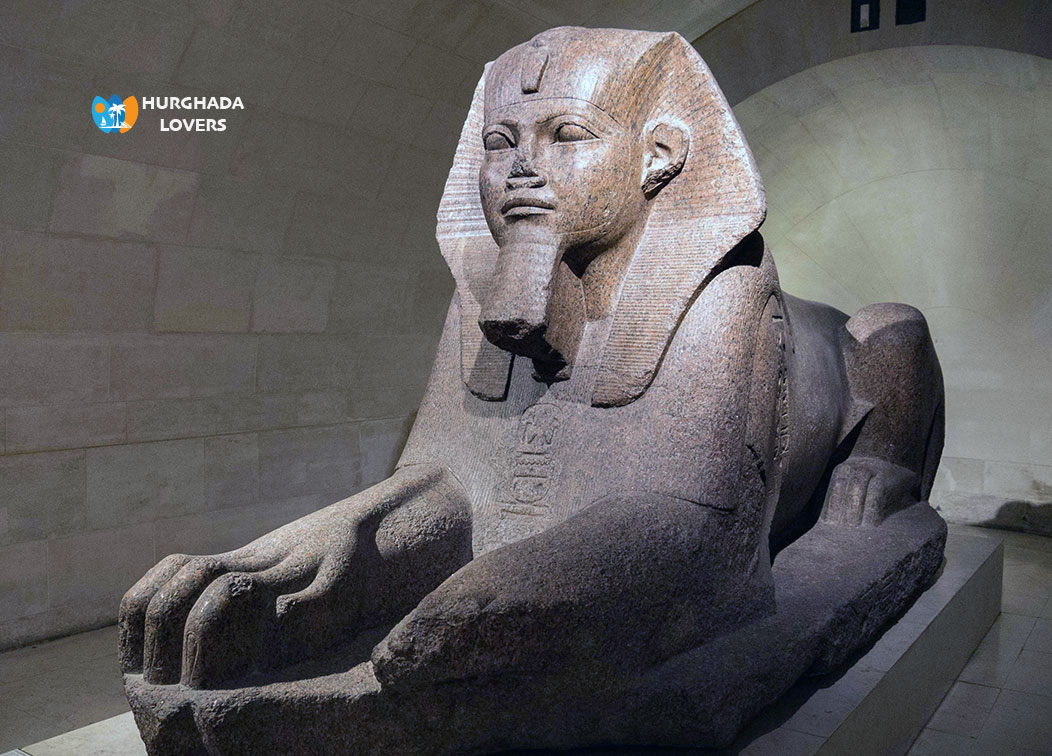Louvre Museum in Paris, France l Facts Egyptian pharaonic Egyptian Antiquities, mummies, artifacts, How many Egyptian artifacts are in the Louvre and more…
Historical facts about the most important Pharaonic Egyptian Monuments, the ancient Egyptian civilization included in the museum, and more Ancient Egypt History..
Louvre Museum Facts
The Louvre Museum and Egyptian antiquities are one of the topics of research by fans of Pharaonic or Egyptian history in general. The Louvre Museum is considered one of the most famous museums in the world. Its beginning was just a castle protecting the city of Paris to discover the history of the Pharaonic civilization. After that, it was the seat of government, and has now become an antiquities museum..
The Louvre Museum has a special wing that contains almost 55,000 Egyptian antiquities..
The museum undertook a series of expansions, through which it became the most beautiful museum in the world, and the Egyptian Pavilion is called the “Legendary Pavilion.”“.
The Egyptian Pavilion at the Louvre Museum began in 1826 AD, after Charles X decided to build this pavilion in the museum..
Jean-François Champollion was appointed curator of this wing.
Trips to transport antiquities from Egypt to France began from the beginning of the French campaign, which began from 1798 to 1801 AD.
This period was the first trip to transport Egyptian antiquities to France, where the soldiers of the campaign carried many Egyptian antiquities.
During their attempts to escape with these antiquities, some of them, including the Rosetta Stone, fell into the hands of the British, after the defeat of France.
These antiquities were moved from England and they also built a British museum that included many Egyptian antiquities from Egypt Archaeological Sites.
The arrival of Egyptian antiquities to the Louvre Museum
The first group of Egyptian antiquities arrived at the Louvre Museum at the hands of Napoleon Bonaparte friend, the French painter Vivienne Denon.“.
The first group of antiquities entered the museum in 1793 AD, after which approximately 16 other historical pieces were transferred..
Among the historical antiquities present in the museum are the following: “The Statue of Akh, the Statue of Amun, and the Statue of Ra.” There is also another group consisting of “The Statue of Wah, the Statue of Ib, and the Statue of Ra.”“.
The museum contains another group of antiquities, including two statues of Queen Nefertes I and Queen Akoris from the Twenty-Sixth Dynasty of Egypt, the beginning of the Late Period, and indicates the development of the arts of Sculpture in Ancient Egypt.
A statue of the God Sekhmet, the most famous ancient Egyptian deities in the Ancient Egyptian religion, was also brought by Count de Forbe.“.
In 1824 AD, the Champollion Museum ordered the purchase of a collection called the “Duran Collection.” The artifacts in that collection amount to approximately 2,149 pieces..
Thus, it was the first real group of Egyptian antiquities that entered the Louvre Museum all at once.
Egyptian antiquities in the Louvre Museum
The museum also contains approximately 1,225 artifacts of small pieces such as utensils, ornaments, as well as Clothing in ancient Egypt, as well as amulets..
The museum also includes a collection of the Mummy of the Pharaohs, in addition to the Pharaonic sarcophagus “Ancient Egyptian Coffins” dating back to the “Coffins of Duran,” in addition to a rare statue of “Meri-Amun.”“.
Other antiquities in the museum include the paintings of “Senusret” as well as “Osiris and Ra.”“.
The museum contains a group of small statues belonging to Amun and Opet, as well as Im and Tamrut“.
The French Consul, Bernardin Drofty, is one of the people most keen on collecting a large collection of Egyptian antiquities..
The consul offered this collection to France, but it refused because of the exaggerated price. England took advantage of that opportunity, bought it, and placed it in the Corrin Museum.“.
Champollion discovered a huge collection of antiquities located in Livorno, Italy.
The thieves were able to collect this group, and the biggest thief was “Henry Salt,” a British consul and the largest looter of Egyptian historical antiquities..
SALT group
The Salt collection was among the rarest pieces that entered the Louvre Museum, after Champollion tried, using his closeness to King Charles X, to obtain that collection..
Among the antiquities in this group is the huge Sphinx, which dates back to the eastern Egyptian Delta.
There is also a group of jewelry of King Thutmose III, the most famous Egyptian Pharaohs kings from the Eighteenth Dynasty of Egypt The New Kingdom period, in addition to a statue of King Khaneferre Sobekhotep IV of the Thirteenth Dynasty of Egypt in the Middle Kingdom of Egypt era, and a statue of King Akhenaton.
Another statue in the Louvre Museum is the statue of Amenhotep IV. There is also a group of paintings from the Neso Cemetery, the most famous Egyptian Tombs.
There are also scenes from daily life and Social Structure in Ancient Egypt and the religious and funerary rituals found on the coffin of King Ramses III, the most famous king of the Pharaohs from the Twentieth Egyptian Dynasty “The Ramesside Period“, which is made of pink granite, the most famous ancient Ancient Egyptian Metallurgy, and indicates the development of Industry in ancient Egypt..
There is also another group of antiquities excavated from the tombs.
The granite sarcophagus, which belongs to king Amasis II, was gifted by Charles X to Champollion.
There is also a “Zodiac” sign in the museum, which dates back to Temple of Dendera located in Qena, Egypt.
Champollion also acquired the second collection of Drofty in 1827 AD, and Consul Camerre also presented a collection of the Pharaohs’ jewels to the Louvre Museum..
The Drifty Golden Collection contained a group of statues, including statues of King Ramses II, in addition to Sobehotep, as well as the head of King Amenhotep III.
There is also a group of huge statues and coffins in the museum dating back to Djed-Euf-Khonsu-Ankh, which are very huge stone coffins..
Visiting dates
From Wednesday to Monday from 9 am to 6 pm.
Note: Facts and secrets of the history will be added soon…
Hurghada Excursions Lovers, Best Travel Agency in Hurghada to provide daily tours to visit the Tourist attractions of Luxor by Hurghada to Luxor Tours and Hurghada to Pyramids Trips. Book online when you come to Hurghada, El Gouna, Sahl Hashish, Makadi Bay, Soma Bay.
Louvre Museum in Paris, France l Facts Egyptian pharaonic Antiquities, mummies

